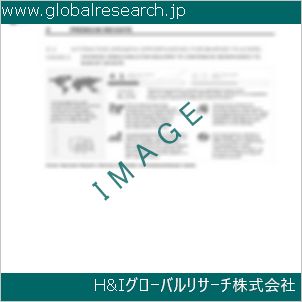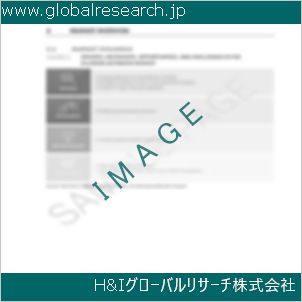Table of Contents
1 Industry Overview of Acetylene
1.1 Definition and Specifications of Acetylene
1.1.1 Definition of Acetylene
1.1.2 Specifications of Acetylene
1.2 Classification of Acetylene
1.3 Applications of Acetylene
1.3.1 Nuclear Application
1.3.2 Non-Nuclear Application
1.4 Industry Chain Structure of Acetylene
1.5 Industry Overview and Major Regions Status of Acetylene
1.5.1 Industry Overview of Acetylene
1.5.2 Global Major Regions Status of Acetylene
1.6 Industry Policy Analysis of Acetylene
1.7 Industry News Analysis of Acetylene
2 Manufacturing Cost Structure Analysis of Acetylene
2.1 Raw Material Suppliers and Price Analysis of Acetylene
2.2 Equipment Suppliers and Price Analysis of Acetylene
2.3 Labor Cost Analysis of Acetylene
2.4 Other Costs Analysis of Acetylene
2.5 Manufacturing Cost Structure Analysis of Acetylene
2.6 Manufacturing Process Analysis of Acetylene
3 Technical Data and Manufacturing Plants Analysis of Acetylene
3.1 Capacity and Commercial Production Date of Global Acetylene Major Manufacturers in 2023
3.2 Manufacturing Plants Distribution of Global Acetylene Major Manufacturers in 2023
3.3 R&D Status and Technology Source of Global Acetylene Major Manufacturers in 2023
3.4 Raw Materials Sources Analysis of Global Acetylene Major Manufacturers in 2023
4 Capacity, Production and Revenue Analysis of Acetylene by Regions, Types and Manufacturers
4.1 Global Capacity, Production and Revenue of Acetylene by Regions 2019-2024
4.2 Global and Major Regions Capacity, Production, Revenue and Growth Rate of Acetylene 2019-2024
4.3 Global Capacity, Production and Revenue of Acetylene by Types 2019-2024
4.4 Global Capacity, Production and Revenue of Acetylene by Manufacturers 2019-2024
5 Price, Cost, Gross and Gross Margin Analysis of Acetylene by Regions, Types and Manufacturers
5.1 Price, Cost, Gross and Gross Margin Analysis of Acetylene by Regions 2019-2024
5.2 Price, Cost, Gross and Gross Margin Analysis of Acetylene by Types 2019-2024
5.3 Price, Cost, Gross and Gross Margin Analysis of Acetylene by Manufacturers 2019-2024
6 Consumption Volume, Consumption Value and Sale Price Analysis of Acetylene by Regions, Types and Applications
6.1 Global Consumption Volume and Consumption Value of Acetylene by Regions 2019-2024
6.2 Global and Major Regions Consumption Volume, Consumption Value and Growth Rate of Acetylene 2019-2024
6.3 Global Consumption Volume and Consumption Value of Acetylene by Types 2019-2024
6.4 Global Consumption Volume and Consumption Value of Acetylene by Applications 2019-2024
6.5 Sale Price of Acetylene by Regions 2019-2024
6.6 Sale Price of Acetylene by Types 2019-2024
6.7 Sale Price of Acetylene by Applications 2019-2024
6.8 Market Share Analysis of Acetylene by Different Sale Price Levels
7 Supply, Import, Export and Consumption Analysis of Acetylene
7.1 Supply, Consumption and Gap of Acetylene 2019-2024
7.2 Global Capacity, Production, Price, Cost, Revenue, Supply, Import, Export and Consumption of Acetylene 2019-2024
7.3 USA Capacity, Production, Price, Cost, Revenue, Supply, Import, Export and Consumption of Acetylene 2019-2024
7.4 EU Capacity, Production, Price, Cost, Revenue, Supply, Import, Export and Consumption of Acetylene 2019-2024
7.5 China Capacity, Production, Price, Cost, Revenue, Supply, Import, Export and Consumption of Acetylene 2019-2024
7.6 Japan Capacity, Production, Price, Cost, Revenue, Supply, Import, Export and Consumption of Acetylene 2019-2024
8 Major Manufacturers Analysis of Acetylene
8.1 Manufacturer One
8.1.1 Company Profile
8.1.2 Product Picture and Specifications
8.1.2.1 Type I
8.1.2.2 Type II
8.1.2.3 Type III
8.1.3 Capacity, Production, Price, Cost, Gross and Revenue
8.1.4 Contact Information
8.2 Manufacturer Two
8.2.1 Company Profile
8.2.2 Product Picture and Specifications
8.2.2.1 Type I
8.2.2.2 Type II
8.2.2.3 Type III
8.2.3 Capacity, Production, Price, Cost, Gross and Revenue
8.2.4 Contact Information
8.3 Manufacturer Three
8.3.1 Company Profile
8.3.2 Product Picture and Specifications
8.3.2.1 Type I
8.3.2.2 Type II
8.3.2.3 Type III
8.3.3 Capacity, Production, Price, Cost, Gross and Revenue
8.3.4 Contact Information
8.4 Manufacturer Four
8.4.1 Company Profile
8.4.2 Product Picture and Specifications
8.4.2.1 Type I
8.4.2.2 Type II
8.4.2.3 Type III
8.4.3 Capacity, Production, Price, Cost, Gross and Revenue
8.4.4 Contact Information
8.5 Manufacturer Five
8.5.1 Company Profile
8.5.2 Product Picture and Specifications
8.5.2.1 Type I
8.5.2.2 Type II
8.5.2.3 Type III
8.5.3 Capacity, Production, Price, Cost, Gross and Revenue
8.5.4 Contact Information
…
9 Marketing Trader or Distributor Analysis of Acetylene
9.1 Marketing Channels Status of Acetylene
9.2 Traders or Distributors with Contact Information of Acetylene by Regions
9.3 Ex-work Price, Channel Price and End Buyer Price Analysis of Acetylene
9.4 Regional Import, Export and Trade Analysis of Acetylene
10 Industry Chain Analysis of Acetylene
10.1 Upstream Major Raw Materials Suppliers Analysis of Acetylene
10.1.1 Major Raw Materials Suppliers with Contact Information Analysis of Acetylene
10.1.2 Major Raw Materials Suppliers with Supply Volume Analysis of Acetylene by Regions
10.2 Upstream Major Equipment Suppliers Analysis of Acetylene
10.2.1 Major Equipment Suppliers with Contact Information Analysis of Acetylene
10.2.2 Major Equipment Suppliers with Product Pictures Analysis of Acetylene by Regions
10.3 Downstream Major Consumers Analysis of Acetylene
10.3.1 Major Consumers with Contact Information Analysis of Acetylene
10.3.2 Major Consumers with Consumption Volume Analysis of Acetylene by Regions
10.4 Supply Chain Relationship Analysis of Acetylene
11 Development Trend of Analysis of Acetylene
11.1 Capacity, Production and Revenue Forecast of Acetylene by Regions and Types
11.1.1 Global Capacity, Production and Revenue of Acetylene by Regions 2024-2029
11.1.2 Global and Major Regions Capacity, Production, Revenue and Growth Rate of Acetylene 2024-2029
11.1.3 Global Capacity, Production and Revenue of Acetylene by Types 2024-2029
11.2 Consumption Volume and Consumption Value Forecast of Acetylene by Regions, Types and Applications
11.2.1 Global Consumption Volume and Consumption Value of Acetylene by Regions 2024-2029
11.2.2 Global and Major Regions Consumption Volume, Consumption Value and Growth Rate of Acetylene 2024-2029
11.2.3 Global Consumption Volume and Consumption Value of Acetylene by Types 2024-2029
11.2.4 Global Consumption Volume and Consumption Value of Acetylene by Applications 2024-2029
11.3 Supply, Import, Export and Consumption Forecast of Acetylene
11.3.1 Supply, Consumption and Gap of Acetylene 2024-2029
11.3.2 Global Capacity, Production, Price, Cost, Revenue, Supply, Import, Export and Consumption of Acetylene 2024-2029
11.3.3 USA Capacity, Production, Price, Cost, Revenue, Supply, Import, Export and Consumption of Acetylene 2024-2029
11.3.4 EU Capacity, Production, Price, Cost, Revenue, Supply, Import, Export and Consumption of Acetylene 2024-2029
11.3.5 China Capacity, Production, Price, Cost, Revenue, Supply, Import, Export and Consumption of Acetylene 2024-2029
11.3.6 Japan Capacity, Production, Price, Cost, Revenue, Supply, Import, Export and Consumption of Acetylene 2024-2029
12 New Project Investment Feasibility Analysis of Acetylene
12.1 New Project SWOT Analysis of Acetylene
12.2 New Project Investment Feasibility Analysis of Acetylene
13 Conclusion of the Global Acetylene (CAS 74-86-2) Industry 2024 Market Research Report
| ※参考情報 アセチレンは、化学式C2H2で示される有機化合物であり、最も簡単なアルキンの一種です。CAS番号は74-86-2で、無色のガスとして知られています。アセチレンは高いエネルギーを持ち、主に炭素と水素から構成されています。この物質は1910年代から産業で使用されており、その特徴と用途は非常に多岐にわたります。 アセチレンの主な特徴の一つは、非常に高い炎温度を持つことです。アセチレンと酸素を組み合わせることで得られる火炎の温度は、約3,500度Cに達することがあります。この高温は、金属の切断や溶接に使用され、特にアセチレン溶接として知られる技術は、金属加工業において重要な役割を担っています。また、アセチレンは非常に不安定な化合物であるため、取り扱いには注意が必要です。圧縮および保存時に注意を払う必要があり、適切な条件で保存しないと爆発の危険があるため、特別な容器で保管されることが一般的です。 アセチレンにはいくつかの種類や派生物が存在します。例えば、アセチレンは重合反応を通じてポリマーの合成に利用されることがあります。これにより、アセチレン基を含む様々な化合物が合成され、プラスチックや合成繊維の原料となることがあります。また、アセチレンは反応中間体としても使用され、他の化学反応においてさまざまな誘導体を生成する基盤となります。 アセチレンの主な用途の一つは、溶接における火焰の提供です。アセチレンと酸素を混合し、点火することによって、非常に高温の火炎が得られ、これにより金属の接合や切断が行われます。特に、鉄鋼業界では、アセチレン溶接が広く採用されており、その効率性と精度から多くの現場で重宝されています。さらに、アセチレンは化学合成の分野でも重要な役割を果たしており、例えば、アセチレンを出発点にして、さまざまな有機化合物や医薬品の合成にも使用されます。 また、アセチレンは、炭酸カルシウムの加熱と水の反応によって製造されることが一般的です。この過程で、生成されるアセチレンに対して精製処理が行われ、使用する際に不純物を取り除くことが重要です。化学工業では、高純度のアセチレンが求められ、これには特別な技術が導入されています。精製されたアセチレンは、他の化学品の原料として非常に有用であり、多くの化学製品の前駆体となることがあります。 アセチレンに関連する技術としては、アセチレン製造のための新しいプロセスの開発や、より安全な取り扱い方法の研究が進められています。特に、環境への影響を考慮した持続可能な製造プロセスが重視されており、代替原料やエネルギー効率が高い方法の導入が模索されています。これにより、アセチレンの生産が環境に優しい形で行われることが期待されています。 さらに、アセチレンを利用した材料の開発にも注目が集まっています。高強度の材料や新しいタイプのポリマーは、アセチレンを基にした化合物から得られるものであり、これらは航空宇宙、電子機器、自動車産業などでの応用が期待されています。新しい技術の進展により、アセチレンの利用分野はますます広がっています。 総じて、アセチレンは非常に多機能な化合物として、さまざまな産業で不可欠な存在となっています。溶接や化学合成、材料開発においての利用はもちろん、関連技術の進展によってその可能性はますます高まっています。今後も、持続可能な方法でのアセチレンの製造や利用促進を目指す研究が進められることが期待されます。アセチレンが今後どのように進化し、工業界や研究分野で活躍していくのか、引き続き注目が集まります。 |
❖ 免責事項 ❖
http://www.globalresearch.jp/disclaimer












